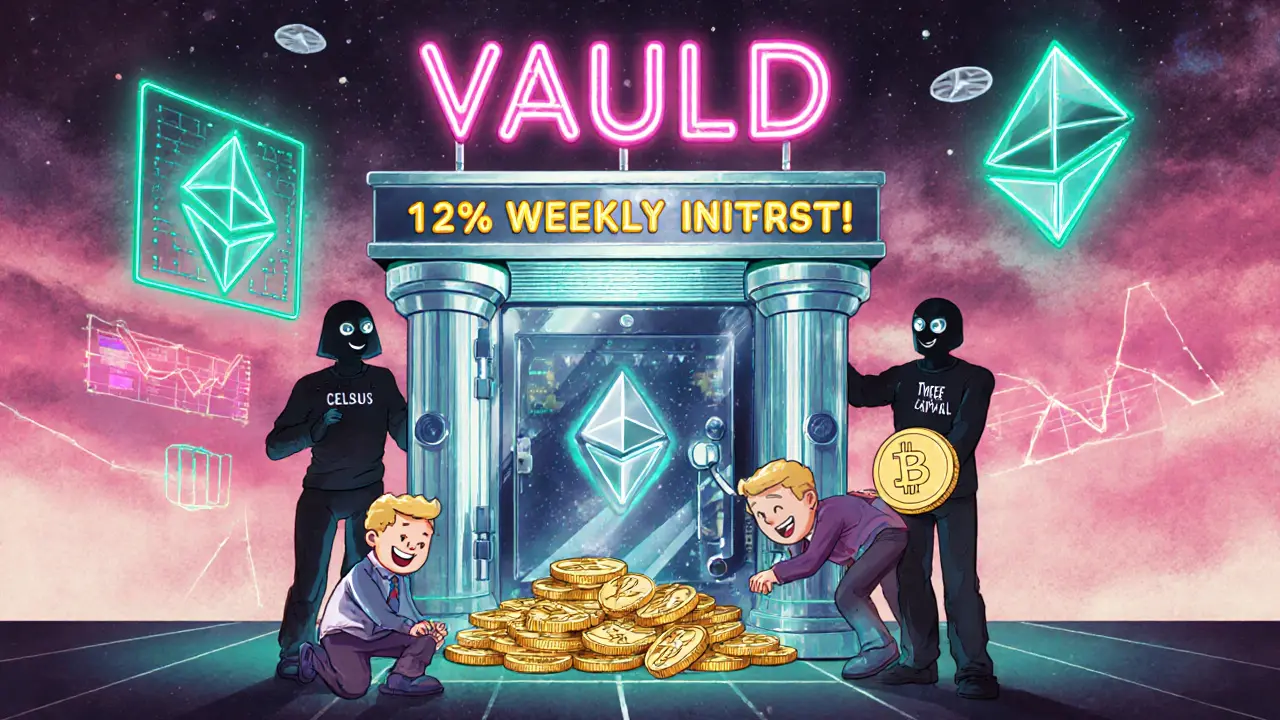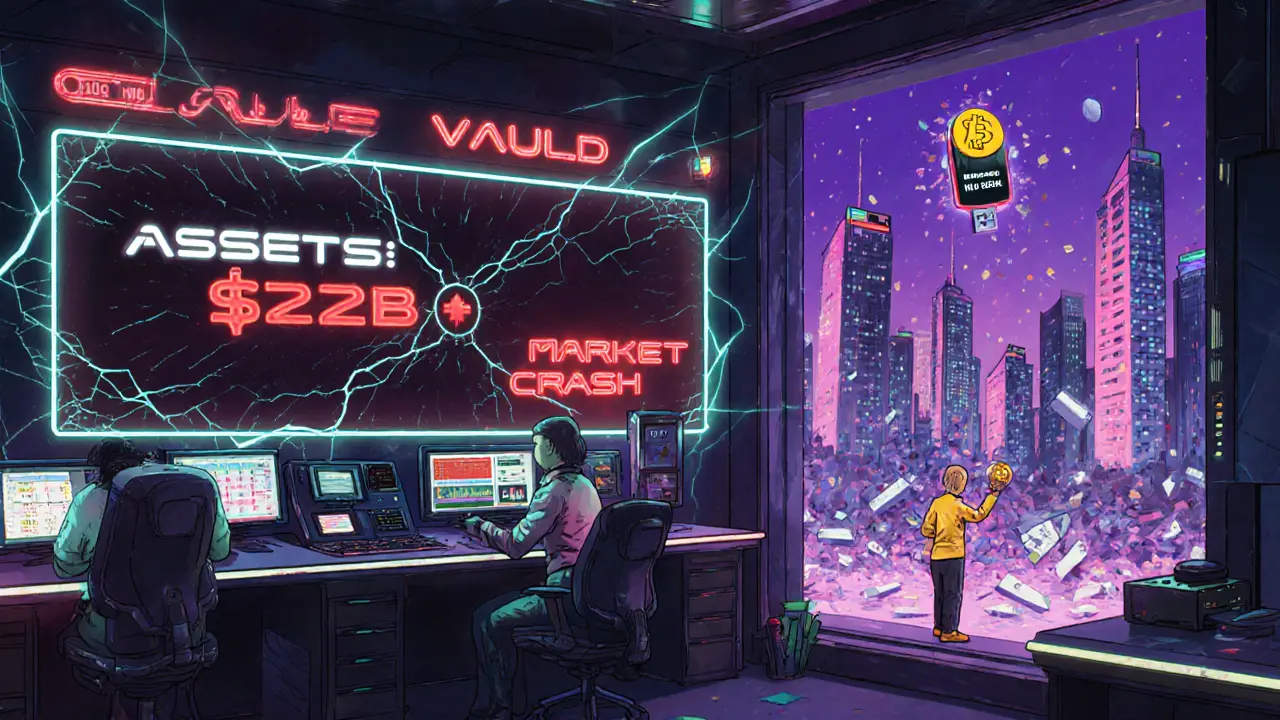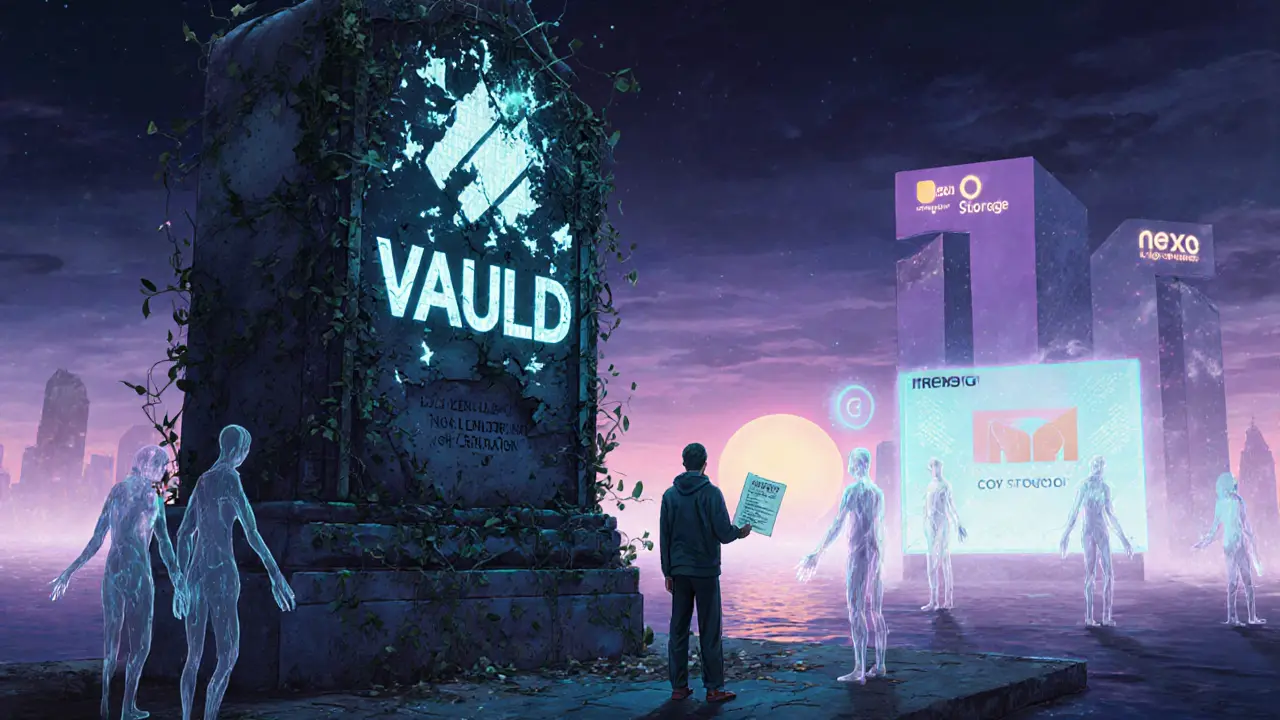Vauld Crypto Exchange Review: What Happened and Why It Failed
 Nov, 22 2025
Nov, 22 2025
Crypto Lending Risk Calculator
How Your Funds Could Be Affected
Based on the Vauld collapse, platforms offering rates above 8% often use risky lending practices. Learn how different yields could impact your investments.
Vauld crypto exchange was once promoted as a user-friendly crypto bank-offering high interest rates, instant swaps, and a simple interface for beginners. But today, it doesn’t exist as a functioning platform. If you’re reading this in late 2025, you’re likely trying to understand what went wrong, whether you can recover lost funds, or if similar platforms are safe. This isn’t a typical review. It’s a post-mortem.
How Vauld Worked (Before It Crashed)
Vauld launched in 2018 as Bank of Hodlers and rebranded in 2020. It wasn’t just an exchange. It was a lending platform disguised as a bank. Users could deposit Bitcoin, Ethereum, or over 275 other cryptocurrencies and earn interest-up to 12% annually. Interest was calculated daily and paid weekly, which was unusual. Most competitors paid monthly. Vauld made it feel like a savings account, but instead of FDIC insurance, your money was lent out to other crypto firms.
The platform had two trading options: Instant Swap for quick conversions (like turning ETH to USDT in seconds) and Pro Trading for limit and market orders. Fees were flat at 0.10% for both makers and takers-competitive with Binance. Deposits had no minimum beyond $1, and withdrawals were free in fiat. No hidden fees. No account maintenance charges. It looked too good to be true.
Behind the scenes, Vauld’s business model was simple: take user deposits, convert them into stablecoins like USDC, then lend them to hedge funds and other crypto lenders. The profit came from the spread between what users earned (say, 8%) and what Vauld charged borrowers (15-20%). The difference was their revenue. But this model only worked if borrowers paid back.
Why Vauld Looked Safe (Until It Wasn’t)
Before mid-2022, Vauld had strong signals of legitimacy. It raised $2 million from big names like Pantera Capital and Coinbase Ventures. BitGo handled custody-used by institutional players. Binance was its trading partner. It had over 200 employees, 60% based in India. User numbers grew 40x in two years. Assets under management hit billions.
Users loved it. Reddit threads praised weekly payouts. SourceForge reviews averaged 4.2/5. People called it secure. The interface was clean, like a banking app. Onboarding took 15-20 minutes with basic KYC. Video tutorials and FAQs were clear. For beginners, it felt like the easiest way to earn passive income from crypto.
But here’s what wasn’t said: Vauld didn’t disclose who it lent money to. No transparency. No audit reports. No breakdown of loan exposure. That’s not normal for a financial platform. Even Celsius and BlockFi published quarterly reports. Vauld didn’t. That silence was the first red flag.
The Collapse: What Actually Happened
On May 12, 2022, TerraUSD (UST) collapsed. It was supposed to be pegged to $1. It dropped to 10 cents. The panic spread. Lenders who had borrowed against Luna and UST suddenly couldn’t repay. Celsius Network, a major borrower from Vauld, froze withdrawals on June 12. Three Arrows Capital, another big borrower, went bankrupt days later.
Vauld had lent hundreds of millions to these firms. When they defaulted, Vauld couldn’t cover withdrawals. User requests spiked. On June 27, 2022, Vauld announced it was halting all withdrawals, deposits, and trades. The official reason? "Extreme market conditions."
But that wasn’t the full story. By July 1, The Economic Times reported Vauld had liquidated over $200 million in assets in just one month. It cut staff by 30%, slashed marketing, and reduced executive pay. None of it helped. The platform had no cash buffer. No reserve. No plan B.
By mid-July, customer support stopped replying. The website showed a maintenance message. All educational content vanished. The app crashed on launch. What was once a thriving platform became a ghost town.

What Happened to User Funds?
Over $190 million in user funds were trapped. Most were tied up in loans to Celsius and Three Arrows Capital-both now insolvent. Blockchain analytics firm Elliptic estimated recovery rates at less than 30%. That means if you had $10,000 on Vauld, you might get back $3,000… if you’re lucky.
Over 1,200 complaints were filed with India’s Cyber Crime Portal. Users in the U.S. and Europe started class-action lawsuits. Reddit threads filled with despair. One user wrote: "I had 2.3 BTC locked in a 3-month fixed deposit. They promised resolution in 72 hours. Now it’s been 3 weeks. No updates. No emails. Just silence."
Trustpilot ratings dropped to 1.1/5. 89% of recent reviews said "funds frozen." No one got their money back. Not even partial refunds. Not even a timeline.
Why Vauld Failed When Others Survived
Not all crypto lenders collapsed. Nexo and Kraken stayed open. Why? Because they didn’t rely on risky, opaque lending. Nexo kept 70% of assets in cold storage and lent only to vetted institutions. Kraken didn’t lend user deposits at all-they used their own capital.
Vauld’s fatal flaw? Concentration risk. They lent to too few borrowers. When those borrowers failed, the whole house fell. They also didn’t hedge against price drops. If Bitcoin dropped 40%, and a borrower had $150 in BTC as collateral for a $100 loan, that collateral could drop to $90. Vauld didn’t have automated liquidation buffers strong enough to handle that.
Compare that to Celsius, which had similar exposure-and also failed. Or BlockFi, which filed for bankruptcy too. The pattern was the same: high yields, no transparency, overexposure to volatile borrowers.
Lessons Learned: What to Avoid
If you’re looking to earn interest on crypto today, here’s what you need to know:
- High yields = high risk. If a platform offers 10%+ on stablecoins, they’re either gambling or lying.
- Never trust platforms that don’t publish audits. No transparency = no safety.
- Don’t assume custody = security. BitGo secured Vauld’s assets-but didn’t control how they were used.
- Use regulated exchanges. Coinbase, Kraken, and Gemini don’t lend your deposits. They keep them separate. You earn less, but you keep your money.
- Watch for signs of distress. Delays in payouts, vague updates, disappearing support-these are red flags.
Vauld didn’t get hacked. It didn’t get scammed. It failed because it was built on a shaky foundation. And users paid the price.

Is There Any Hope for Recovery?
As of 2025, there’s no sign Vauld will reopen. Legal proceedings are ongoing in India and the U.S., but progress is slow. Creditors are being asked to vote on recovery plans, but most users have given up.
Some have received tiny payouts-under 5%-through bankruptcy settlements. Others are still waiting. There’s no official tracker. No central authority. Just scattered updates on Reddit and legal forums.
If you still have funds on Vauld, your best bet is to join a user group, file a claim with the bankruptcy court, and prepare for long-term disappointment.
Alternatives to Vauld (That Still Exist)
Want to earn interest safely? Here are three real options:
- Kraken: Offers up to 8% on stablecoins. No lending of user funds. Fully regulated. Withdrawals always available.
- Nexo: Pays up to 10% on stablecoins. Publishes monthly reserve reports. Uses BitGo. Still operating as of 2025.
- Coinbase: Earn up to 4.5% on select coins. No lending. Funds held in cold storage. FDIC insurance on USD balances up to $250,000.
None of these offer the wild 12% rates Vauld once promised. But they don’t vanish overnight either.
Final Thoughts
Vauld wasn’t a scam. It was a gamble that lost. It grew fast, marketed hard, and hid its weaknesses until it was too late. The same mistakes are being repeated today by new platforms promising "crypto banking" with high yields.
If you’re tempted by a platform that sounds too good to be true-especially if it’s pushing fixed deposits, weekly payouts, and no withdrawal fees-ask yourself: where is the money really coming from? If the answer is "other borrowers," and you don’t know who they are-you’re already at risk.
Vauld is gone. Don’t let your next crypto move be another funeral.
Is Vauld still operating as a crypto exchange?
No, Vauld ceased all operations on June 27, 2022. Withdrawals, deposits, and trading were suspended indefinitely. The website no longer functions as a platform, and customer support has been silent since mid-2022. It is not active and shows no signs of returning.
Can I get my money back from Vauld?
Recovery is possible but unlikely to be full. As of 2025, bankruptcy proceedings are ongoing. Early reports suggest users may recover between 5% and 30% of their funds, depending on the outcome of asset liquidations. Most users have received nothing. Filing a claim through official bankruptcy channels is the only formal path, but success is not guaranteed.
Why did Vauld offer such high interest rates?
Vauld earned money by lending user deposits to other crypto firms-like hedge funds and lending platforms-at higher rates (15-20%). The difference between what they paid users (up to 12%) and what they charged borrowers was their profit. This model worked until borrowers like Celsius and Three Arrows Capital defaulted during the 2022 crypto crash.
Was Vauld hacked or did it get scammed?
No, Vauld was not hacked. It failed because of poor risk management. The platform lent out user funds to unstable borrowers without adequate safeguards. When those borrowers defaulted during the market downturn, Vauld couldn’t cover withdrawal requests. It was a liquidity crisis, not a security breach.
What should I look for in a safe crypto lending platform today?
Look for platforms that: 1) Publish regular reserve audits, 2) Don’t lend user funds to unknown third parties, 3) Keep assets in cold storage, 4) Offer transparent loan-to-value ratios, and 5) Are regulated in major jurisdictions (U.S., EU, UK). Avoid platforms promising yields above 8% on stablecoins-those are usually too risky.
Are there any crypto platforms that are safe for earning interest?
Yes. Kraken, Coinbase, and Nexo are currently operating and offer interest on crypto with better safety standards. Kraken and Coinbase don’t lend user deposits at all-they use their own capital. Nexo lends but publishes monthly reserve reports. None offer 12% yields, but they also haven’t vanished overnight.